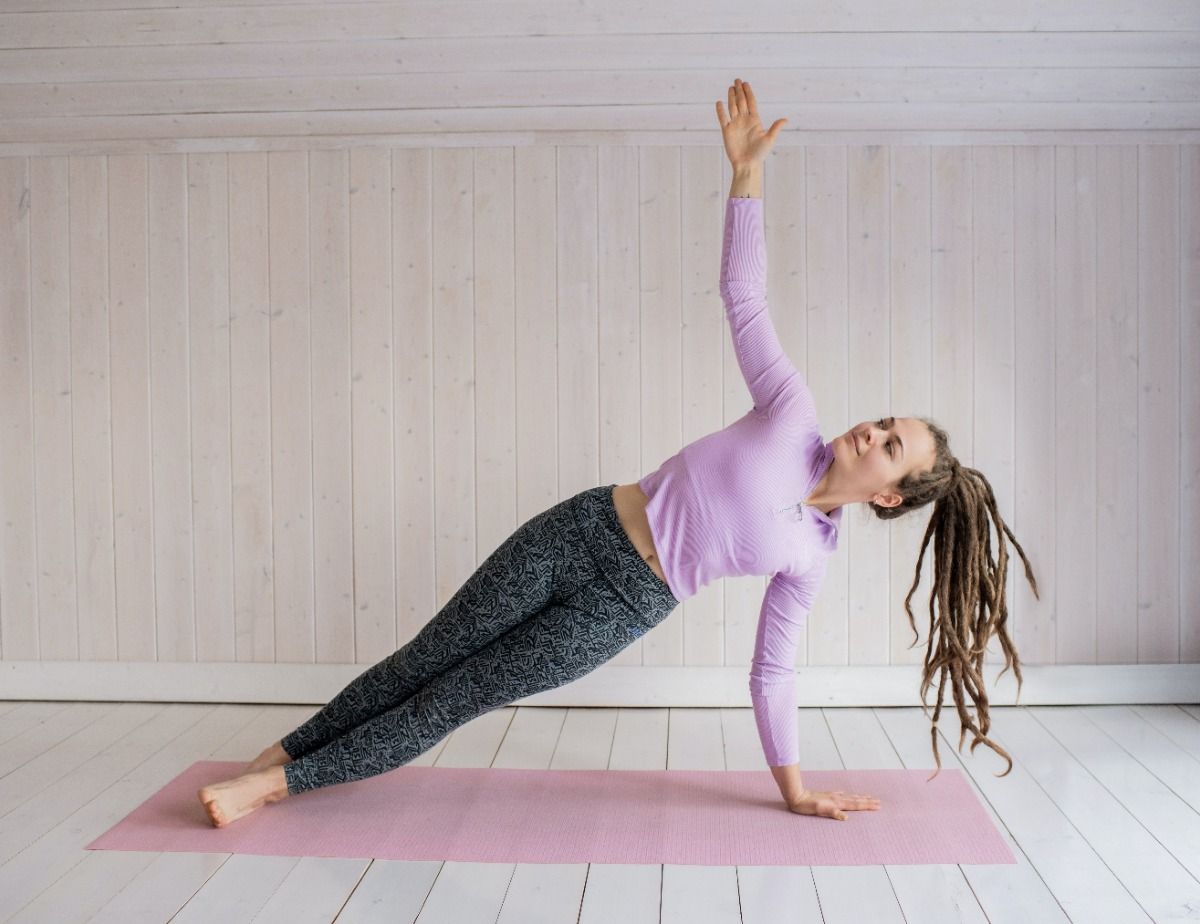
Pilates are an incredibly popular exercise for a reason. Celebrities like Madonna, LeBron James, and David Beckham have made the art of pilates a household name. Back in the day, many people considered the poses on mats to be too simplistic, with many mistakenly believing pilates is only good for stretching and is similar to yoga. However, with strong and agile athletes proving that pilates also improves muscular strength and endurance, Pilates has now evolved into a fitness staple for cross-body training. There are many health benefits of pilates. Today, people of all walks of life have incorporated Pilates into their fitness routine.
Pilates can be modified to suit any fitness level, age group or lifestyle. Pilates is a type of exercise that can suit your lifestyle whether you’re pregnant, recovering from an illness, elderly, sedentary, undergoing rehabilitation, or even a professional athlete enhancing muscular strength. In fact, many doctors recommend pilates because it improves quality of life, and enhances overall health from physical to mental aspects, prevents injuries, and aids in rehabilitation. Check out what pilates is all about below:
What Exactly is Pilates?
Pilates is a low-impact exercise that places a strong emphasis on strengthening the core muscles and other stabilizer muscles in the body.
Pilates is known for improving muscular strength, postural alignment, balance, and overall mobility. Pilates is an exercise that helps people control their breathing and muscles, and especially helps people strengthen and control the spine. Your spine being strengthened and exercised in pilates definitely helps improve your overall mobility and range of motion.
Pilates promotes overall wellness through a series of more than 600 exercise variations, functional movements and poses that offer a wide range of benefits from a long and lean physique to amazing core strength.
Pilates is one of the forms of exercise that works for people of all ages, genders, sizes, and fitness levels.

The Founder of Pilates and his Vision of Functional Movement
Traditionally, pilates was called Contrology by the founder of Pilates, a man named Joseph Hubertus Pilates. In 1945, he published a book entitled, Return to Your Life Through Contrology. He said the pilates method “develops the body uniformly, corrects wrong postures, invigorates the mind, and elevates the spirit.” Thanks to his books and students, his teachings on coordinating the mind, body, and spirit were passed on to the new generation after his death in 1967.
Pilates places a strong emphasis on core work because a strong core plays a central role in developing functional and sustainable movement patterns all throughout the human body. The series of pilates exercises coordinate both movement and breath. These elements work hand-in-hand to work all the body’s muscles. This includes the prime movers and deep stabilizing ones that your body relies on to function.
The goal of pilates is to align your body’s structure, ensure muscular balance on both sides of the body, and ensure proper support and function of your joints. Though the moves look simple, they are anything but that. Don’t let the seemingly simple moves deceive you into thinking you will not get a good workout with pilates. In fact, it is very challenging to get the correct poses and execute the right form.
Although there are beginner’s classes of pilates, as you progress, you’ll get into some challenging movements that are very efficient in strengthening your body and toning your physique.
Just about anyone can do pilates because it is a low-impact exercise that helps you gain and maintain strength. You can achieve strength with pilates as it fine-tunes your body’s neuromuscular patterns while maintaining overall muscle balance, preventing injuries. With consistent pilates practice, you can reap many benefits from improved strength, flexibility, mobility, and stability. Incorporating the practice in your life will allow you to readily accomplish your daily activities with more power and less strain.
Health Benefits of Pilates
Pilates relies on whole-body movement to target specific muscle groups. With the aid of gravity, breath, and spring resistance, the practice re-educates your movement patterns. It also rebalances your body’s underlying structural and muscular systems. When you break habits and long-standing patterns in the body, you can enjoy more bodily freedom.
Remember, terrible posture and poor alignment hinges on how the body functions in relation to one another. Often, you may experience imbalance and muscle tensions due to bad habits, illness, or injury. Thankfully, you can reset all of them by executing targeted and controlled pilates movements. There are many health benefits of pilates, so below we’ll discuss some of them in detail:
Amplify Core Strength and Strengthen Muscles
One of the many perks of pilates is improving your core. This is the centre of your body where all movement springs from. Your core is not just your abdominal muscles, but it refers to all the surrounding muscles of your trunk. When you strengthen this area and make it more pliant, you can better support and stabilize your body. In addition, the core acts as a brace to stabilize the back and support the organs. Hence, core strength can do the following:
- Decrease back pain and neck pain caused by poor posture
- Minimize hip pain
- Mitigate the onset of dysmenorrhea in women
- Promote proper pelvic floor function
- Improve movement cause they stem from the core
Aside from strengthening the core, Pilates is great for strengthening lots of muscles in your body for a more toned physique and a stronger, healthier body.
Promotes Good Posture
Since pilates strengthens your spine, improve your spine’s flexibility, and remind you to focus on proper alignment, it can improve your postural muscles. Besides, strengthening your core also comes with the added benefit of giving a lift to these neglected postural muscles. A strong core is crucial for good posture. With pilates, you work on these weakened muscles to ensure you’ve got proper form no matter your age.
Remember, good posture is not just for vanity purposes – it’s not just about looking taller or leaner. However, you do look nicer and more confident when you’re walking tall without a hunchback!
Keep in mind, when you stop slouching and sit upright with correct posture, you help prevent head, back, neck, and shoulder pain. This also prevents muscle imbalance and headaches.
With pilates, you align postural muscles, balance opposing muscles, and enjoy an ideal range of motion in all your joints. Besides, when you correct everything, you will find it easier to sit comfortably and stand tall with ease.

Improve Mental Well-Being
Since pilates promotes breathing exercises and promotes mental awareness, you will learn to focus inward and stay mindful of whatever goes on in your body. Pilates movements can down-regulate the nervous system, which in turn lowers cortisol levels and decreases stress.
You may also notice improved cognitive function after pilates training. Since it increases blood flow to the brain, it enhances neurotransmitters responsible for learning, thinking, and memory. Most of all, it releases endorphins which makes you feel happy and serotonin which helps you relax. As a result, with pilates training, you can reduce fatigue, anxiety, and negative thoughts.
Consider This Fun Change of Pace For Your Fitness Routine
Many people today cross-train with pilates. Incorporating pilates can be a fun change of pace from your usual workout routine. Moreover, you will enjoy trying out new positions where you can mimic a seal, roll like a ball, or hang like a monkey. These movements evoke playfulness while enhancing your overall health.
Besides, workouts should be varied and fun so you won’t get bored. If you love your training, you won’t bail out and feel lazy to exercise. If you practice Pilates, you will notice many benefits because you train your mind, body, and spirit. These interconnections will truly impact many aspects of your life.
If you are thinking of changing your workout routine or incorporating something new, don’t forget to ask your physician for advice. Seeking medical clearance, especially if you have a family history of diseases or chronic illness, ensures that your body is healthy enough to cope with a new fitness program. You can also consider genetic testing like CircleDNA to find out the optimal fitness training type for you, based on your genetics. Test results will also reveal your risk of injury, health risk factors and describe the best exercises suited to your body type.

This Post Has One Comment
Comments are closed.